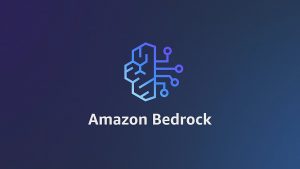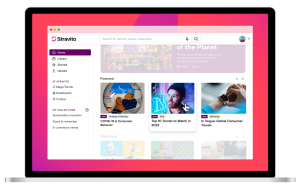Ask DevOps Guest: ‘Mobile First’ is no longer enough
![]() Many organizations think a “mobile first” strategy for new apps and services is enough to keep their customers engaged.
Many organizations think a “mobile first” strategy for new apps and services is enough to keep their customers engaged.
I think they’re missing the boat. The challenge to your business is way bigger than just mobile, and extends into wearables, sensors, consoles, kiosks, Internet of Things, and more – and all the apps that go with (or on) them. As consumerization accelerates this proliferation of endpoints and apps, consumers won’t wait for creaky old development processes. Seizing leadership in this new age of consumer-driven IT requires rapid delivery of a superior experience, regardless of device. Meeting this demand means tapping into both DevOps and APIs. Learn more about how this can be achieved with our new eBooklet, “Seven Ways to Create an Unbeatable Enterprise Mobility Strategy”.
First, we need to understand the new requirements of user-driven IT adoption. As mobile devices have become more ubiquitous and easy to use, consumers have become much more savvy. Even five years ago, my old uncle had a dumb phone and no inclination to get a smartphone, let alone learn how to text. Now, he can pick up just about any phone and log on to his favorite Web sites and do online banking. Users expect these devices will then do everything from play word games with friends on other continents, find the nearest Asian fusion restaurant or identify galaxies in the night sky based on their position and the time.
Your users, and your customers, won’t wait years or even months for the next great experience. They expect them now.
The other great challenge is the ever-expanding range of platforms beyond mobile to what I call “multichannel.” Smartphones and tablets are being supplemented by everything from game consoles to set-top boxes to wearable devices such as Fitbit or smart watches. Whoever delivers the best experience on these first can topple established market leaders. (Think of how iTunes changed the music industry, and what the likes of Roku and Netflix are doing to cable industry.)
So what does it take to deliver great experiences across an ever-expanding mix of new devices and applications?
The first great enabler is DevOps. Compressing app development, testing, deployment and improvement into one continuous cycle lets developers slipstream new capabilities into production and fine-tune them instantly based on consumer feedback. Given the pace of change and updates we’ve become used to in the mobile world, we might have had to invent DevOps if it didn’t already exist.
The fact that DevOps continually feeds information from production back to developers hits another important point: The user experience is about more than the user interface. It’s about performance, reliability up-time, and of course managing security and privacy. You can’t get the continuous cycle of feedback and rapid improvement you need in this new multichannel world with old-fashioned, step-by-step “waterfall” development.
The second critical enabler is APIs, which provide access to the legacy data and third-party services that make mobile applications compelling. Looking for restaurant reviews? Shopping for a low-cost flight? Banking a check? All of that requires access to data on one or more servers. Monitoring your heart rate? Using motion control? Comparing the calorie burn in your workout to that of the Russian Olympic bobsledding team? All of this requires access to data provided by sensors or remote devices. APIs allow you to unlock the value of that data, and to develop multiple applications for various devices that tap those back-end systems.
APIs also let you integrate with external cloud platforms, so you can scale up if your application goes viral. There are now nearly 11,000 APIs that let companies, or external developers, use existing content or services to generate new revenue or improve customer satisfaction. Amazon, for example, is doing a trillion transactions a day by extending its look and feel to affiliates through APIs. New York’s Metropolitan Transportation Authority opened its API to let developers access data such as schedules and arrival times. These outside developers came up with three or four popular applications for riders the MTA might never have thought of, or had the talent or resources to develop on its own.
There’s still time to make your mark before new market leaders emerge on these new devices. Wearable technology is still very experimental. Set-top boxes, while not new, have not yet made their mark as an application platform beyond entertainment. If you were the first to deliver a unique experience through an Xbox gaming console, for example, you could reach a market your competitors cannot.
The nexus of DevOps and APIs make this possible. But you’ve got to get going now, because some smart competitor you’ve never heard of is getting ready to beat you to it.
![]() by Andi Mann
by Andi Mann
Andi Mann, VP of Strategic Solutions at CA Technologies, has over 20 years of global experience within IT departments, with software vendors, and as a leading industry analyst. He has been widely published in the New York Times, USA Today, CIO Magazine, Computerworld, and other publications. Andi has presented worldwide on virtualization, cloud, automation, and IT management. He is co-author of the popular handbook, “Visible Ops—Private Cloud.”
A message from John Furrier, co-founder of SiliconANGLE:
Your vote of support is important to us and it helps us keep the content FREE.
One click below supports our mission to provide free, deep, and relevant content.
Join our community on YouTube
Join the community that includes more than 15,000 #CubeAlumni experts, including Amazon.com CEO Andy Jassy, Dell Technologies founder and CEO Michael Dell, Intel CEO Pat Gelsinger, and many more luminaries and experts.
THANK YOU













